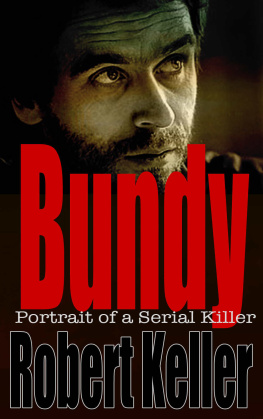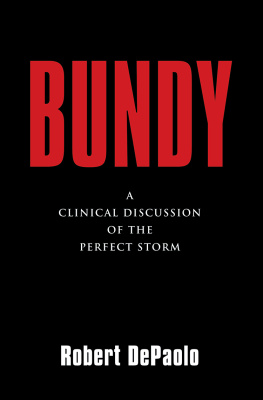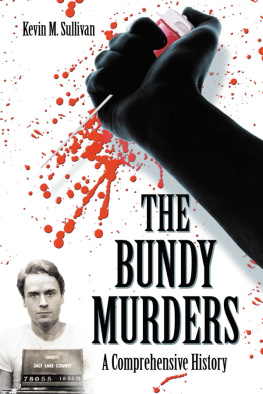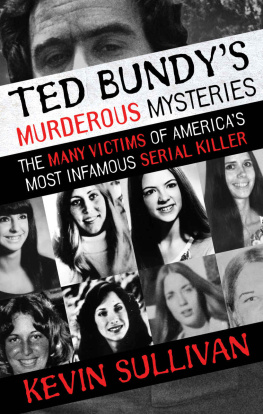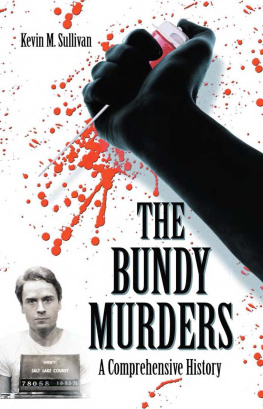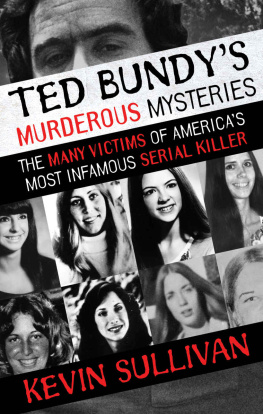Thank you for downloading this Simon & Schuster eBook.
Join our mailing list and get updates on new releases, deals, bonus content and other great books from Simon & Schuster.
C LICK H ERE T O S IGN U P
or visit us online to sign up at
eBookNews.SimonandSchuster.com
We hope you enjoyed reading this Simon & Schuster eBook.
Join our mailing list and get updates on new releases, deals, bonus content and other great books from Simon & Schuster.
C LICK H ERE T O S IGN U P
or visit us online to sign up at
eBookNews.SimonandSchuster.com
Praise for The Color of Truth
Keenly perceptive, thoroughly researched, fair and balanced.... Birds detailed account of [the Bundys] major roles in the Vietnam imbroglio adds significantly to the historical record.
Townsend Hoopes, Los Angeles Times
Balanced, highly original.... Bird depicts [the Bundy brothers] with nuance and sympathy.
James G. Blight, The Washington Post
The [Vietnam] chapters are first-rate.... Bird powerfully shows how the brothers struggled to craft a vital center but built one that could not hold.
Foreign Affairs
Birds sources are well marshaled, and they make for good, sometimes fascinating reading.
Mark Danner, The New York Times Book Review
Weaving a rich history of government documentssome recently declassified, some still classifiedwith interviews and a fresh look at available sources, Bird delivers the definitive assessment of two Cold Warriors.
Jeff Jones, Boston Review
Birds dual biography offers a vivid, dramatic chronicle of the genesis, the conduct, and the aftermath of the long, undeclared war in Southeast Asia.
Charles Wright, Biography Magazine
An exhaustively researched, elegantly written, scrupulously fair-minded and intellectually tough-minded biography.... A masterful achievement.
Richard Foster, Milwaukee Journal Sentinel
For nearly thirty years, few men had greater power over American foreign policy than Harvey Bundy, right-hand man for Secretary of War Henry Stimson throughout the Second World War, and Bundys two brilliant sons, William and McGeorge. Its the latter we remember best nowfor pushing the United States into war in Vietnam, for their arrogant dismissal of skeptics when things went tragically wrong, for their silence after the wars bitter end. The Color of Truth explains how the Bundys, for good and ill alike, helped to fashion the American century after their own image.
Thomas Powers, author of The Man Who Kept the Secrets: Richard Helms and the CIA
The Bundy brothers seldom made headlines, but they were key figures in the Kennedy and Johnson administrations. Kai Birds highly readable account of the roles they both played contains fresh and fascinating details on the formulation and conduct of American foreign policy during the Cold War.
Stanley Karnow, author of Vietnam: A History
Kai Birds study of the Bundys will join a short list of essential reading on the history of the Cold War. He compels us to rethink the major foreign policy events of the fifties and sixties. No one interested in recent U.S. history can afford to ignore this important book.
Robert Dallek, author of Flawed Giant: Lyndon Johnson and His Times, 19611973
A remarkably well-researched and comprehensive biography that shows all the complexities of two formidably able Cold War liberals who were not ideologues but who, in Vietnam, and despite their hesitations, made some fatefully bad decisions.
Stanley Hoffmann, University Professor, Harvard University
Kai Bird has written a brilliant and absorbing book. Using recently declassified sources, he combines an insightful, fair and generous study of the Bundys lives with a perceptive look at the institutions in which they labored.
Richard Barnet, author of Global Dreams
Kai Birds The Color of Truth is a gripping, fair-minded dual biography of the Bundy brothers that sheds dramatic new light on U.S. policymaking during the Cold War. If you want to understand what went wrong in Vietnam, this is the book to read. A towering achievement.
Douglas Brinkley, Director, Eisenhower Center, University of New Orleans
Anyone who wants to understand Americas role in Vietnam needs to know the Bundy brothers. Kai Bird lets readers know them as never before. An indispensable addition to the literature on modern American foreign policy.
H. W. Brands, author of T.R.: The Last Romantic
ALSO BY KAI BIRD
The Chairman: John J. McCloy:
The Making of the American Establishment
Hiroshimas Shadow:
Writings on the Denial of History and
the Smithsonian Controversy
(co-editor with Lawrence Lifschultz)

Simon & Schuster
Rockefeller Center
1230 Avenue of the Americas
New York, NY 10020
www.SimonandSchuster.com
Copyright 1998 by Kai Bird
All rights reserved, including the right of reproduction in whole or in part in any form.
First Touchstone Edition 2000
S imon & Schuster and colophon are registered trademarks of Simon & Schuster, Inc.
Designed by Edith Fowler
The Library of Congress has cataloged the Simon & Schuster edition as follows:
Bird, Kai.
The color of truth : McGeorge Bundy and William Bundy, brothers in arms : a biography I Kai Bird.
p. cm.
Includes bibliographical references (p.) and index.
1. Bundy, McGeorge. 2. Bundy, William P., 1917- . 3. Political consultantsUnited StatesBiography. 4. United StatesForeign relations19451989. 5. National securityUnited StatesHistory20th century. 6. United StatesPolitics and government19451989. I. Title.
E840.6.B57 1998
973.920922dc21
[B] 98-24676 CIP
ISBN 0-684-80970-2
0684-85644-1 (Pbk)
ISBN 978-1-5011-6916-8 (eBook)
Gray is the color of truth.
McG EORGE B UNDY , in a speech about Vietnam at the Cosmos Club, May 1967
For Eugene and Jerine Bird and for Susan and Joshua
Introduction
T HE ROOM was hot and we were young and angry. Forty of usstudents at Carleton College in Northfield, Minnesotahad packed ourselves into a small seminar room to hear John F. Kennedys former national security adviser field questions about the ongoing war in Vietnam. I was twenty-one years old and this was my first encounter with McGeorge Bundy
Two and a half years earlier, eighty-nine of us had been arrested in Minneapolis while blocking the doors of a draft-induction center. It had been the largest act of civil disobedience in the history of the state. Four students had just been gunned down by the National Guard at Kent State University while protesting the Nixon administrations invasion of Cambodia. That week 123 Americans were killed in Vietnam, bringing the total to 41,733 Americans killed. By then, upwards of two million Vietnamese on both sides had also died since the war had started in the late 1950s. Through numerous demonstrations and now by small acts of civil disobedience, many Americans from all walks of life had hoped to end a bloody and senseless war. In that spring of 1970, the anti-war movement shut down colleges all across the country. The president called us bums and the war went on for five more years.
It was now November 9, 1972. American soldiers were still coming home in body bags. Just days earlier the peace movements presidential candidate, Senator George McGovern, had been defeated in a landslide by President Richard M. Nixon. And now here was McGeorge Bundya man we all knew as one of the prime architects of the warwaiting to take our questions. His mere presence seemed an affront, an unspeakable act of arrogance.
Bundy stood in the well of this small amphitheater, beaming at us with a tight, clenched smile. Behind his clear-plastic frame glasses, his bright blue eyes gleamed with an icy intelligence. Trim and pink-cheeked, Bundy was a handsome, almost boyish man who looked much younger than his fifty-three years. As president of the Ford Foundation, he now had the profoundly enviable job of passing out some $200 million a year to just about whomever he wished. We probably would have been surprised to learn how much of this money Bundy was funneling to black power advocates in the civil rights movement, environmentalists and public-interest law groups around the country.
Next page

